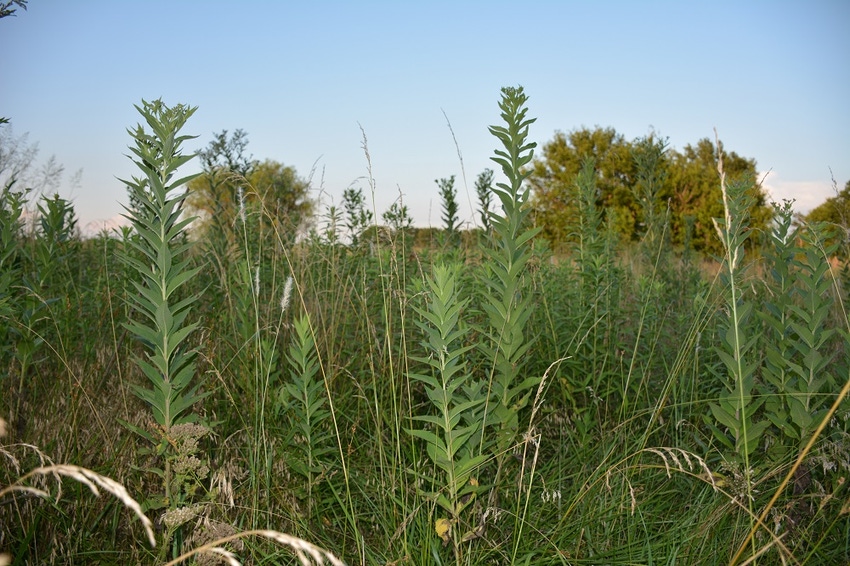
I spoke recently to several groups of producers spread over a wide range of the country and regardless of where they are located, their most common complaint deals with weeds and/or brush.
I have written on this subject before, but I want to take a little different approach.
We spend a lot of time and money attempting to rid our pastures of infestations of unwanted plants. Sadly, most of these attempts are ineffective and, in the long term, make the situation worse.
Weeds do not cause poor pasture conditions; poor pasture conditions cause weeds.
Most of the plants we call weeds share a common trait; they are able to live and reproduce in degraded environments. They literally are natures' scabs; brought in to heal a wound of the local ecology.
The mechanisms that weeds use to achieve viability vary widely – low growth stature, spines, short maturity cycle, large amounts of anti-quality compounds, tolerance to excess minerals – but the results are the same: These species are able to prosper under growing conditions that more desirable forage plants cannot tolerate.
The logical way to deal with weedy pastures is not to kill weeds but rather to change the poor growing conditions that allow the weeds to flourish. Nearly always these poor conditions are brought about by faults in the ecological processes: water cycle, mineral cycles, and energy flow.
The most common cause of these faults – abusive grazing – is the easiest to correct, but also the factor least likely to be addressed by weed-control programs.
Contrary to pop culture wisdom, properly managed grazing is not destructive, but rather is beneficial to all members of the local ecological complex. It is one of the factors that builds healthy grassland.
It does this by fostering a multitude of mutually beneficial relationships between all members of the soil-plant-animal complex that is grazing land. For thousands of years, grazing was managed by nature and the results of this management were healthy populations of plants, animals, and microbes made up of healthy individuals functioning as a whole. Eons of this cooperation produced the fantastically productive soils found under undisturbed grasslands worldwide.
There were periods when natural disasters disturbed conditions and set back progress toward the highly productive (life promoting) and stable local environments. The effects of these anomalies did not continue once the disaster passed because only mutually beneficial relationships persist long term.
Conversely, those relationships based on exploitation of one member by another are self limiting. Predator – prey relationships would seem to refute this statement, but at the species level predators are essential to the health of prey populations.
Low-seral (low-successional) species tend to devote a larger percentage of their energy to reproduction than do high-seral plants. Their sole focus is not the wellbeing of the individual plants, but to achieve reproduction. Individual plants are generally short-lived, often less than a full growing season, but by producing large numbers of offspring, the species is perpetuated.
It is interesting that high-seral plants, those that require good growing conditions and live a long time, donate significant percentages of the energy they produce by photosynthesis to soil microbes as root exudates. By promoting a robust soil biology, these plants help create widespread good growing conditions that they themselves require – from nutrient availability, to soil tilth, to disease and parasite suppression.
As humans took over management of the land, the results have been a loss of stability and an increase in the populations of low-seral plants, including weeds. Since this interferes with the production of desired plants, we devote time, energy and money in attempts to reduce weeds.
The vast majority of control measures rely on killing weeds by the use of poisons, mowing, tillage or fire. All of these practices destroy much more than the target plants and reduce the complexity of the vegetation sward. They destroy mutually beneficial relationships between plants, animals and microbes and set the stage for even worse infestations in the future.
Complex communities tend to be both productive and stable; simplified communities are inherently unstable and subject to boom-and-bust type productivity. One of the few weed-control techniques that can actually improve the ecological processes is the use of sheep and/or goats to convert low-seral plants into plant and microbe feed.
Weed poisons are normally formulated to kill broad leaf plants – forbs – and do not distinguish between weeds and valuable forage forbs and legumes. It is worth noting that some forbs can be excellent sources of minerals, especially trace minerals that are in short supply in grasses.
Once again it is appropriate to suggest: Manage to promote what you want rather than to kill what you don't want.
About the Author(s)
You May Also Like




